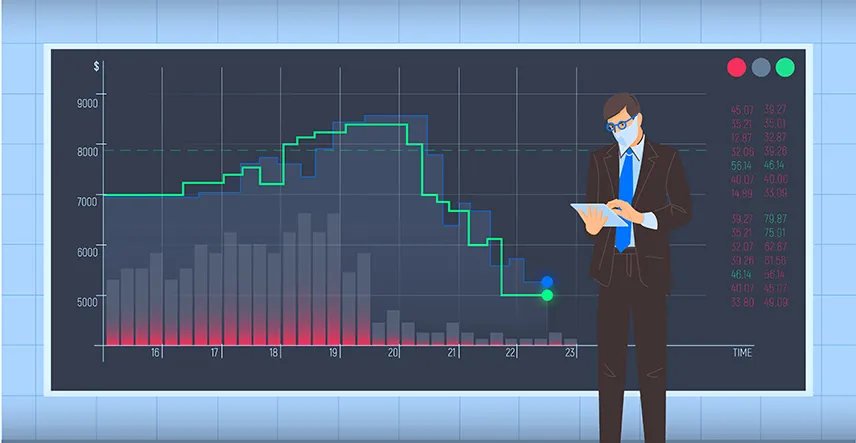
Market indicators play a crucial role in helping investors and analysts assess the overall health and direction of financial markets. These indicators, derived from various financial instruments and economic data, offer valuable insights into market trends and potential opportunities. This overview explores the significance of market indicators and delves into different types that provide key signals for decision-making in the dynamic world of finance. Understanding these indicators is essential for investors seeking to make informed choices in navigating the complexities of the financial landscape.
Table of Contents
Defining Market Indicators
Market indicators can be defined as quantitative tools that provide information about current market trends and conditions that can be used to forecast future trends. These indicators serve as valuable tools for investors to make informed decisions about buying and selling financial securities.
Market Indicators Vs Technical Indicators
Market indicators are a subset of technical indicators, as both are computed using statistical formulae and quantitative methods. This said, there is a major differentiating factor between the two.
- Market Indicators: Market indicators serve the purpose of offering insights into the broader conditions of financial markets. These indicators encompass a range of factors, including economic reports, interest rates, and major stock indices. They contribute to a comprehensive understanding of overall economic health and investor sentiment.
- Technical Indicators: Technical indicators, in contrast, focus specifically on the price and volume data of individual securities. Examples of technical indicators include moving averages, relative strength index (RSI), and stochastic oscillators. These tools assist traders and analysts in identifying trends, assessing momentum, and determining potential entry or exit points for specific assets. They provide a more detailed and granular analysis of the market at the security level and are often used in conjunction with market indicators for a well-rounded perspective on market dynamics.
Investors and traders refer to market indicators to interpret the state of the broader market rather than an individual asset. Therefore, market indicators are calculated after analysing multiple securities, compared to a technical indicator that takes only a single security into account. With Share India’s options calculator, you can make informed decisions about your options trades and increase your chances of success.
Types of Market Indicators
Quantitative analysts have used different mathematical models and statistical formulae to analyse the markets, and that has resulted in several market indicators. So, below are some of the most popular market indicators used by traders and investors today.
Moving Averages
- Moving averages are, perhaps, the most commonly used indicators in the stock market, used by almost all kinds of investors and traders.
- This indicator can be used to analyse the trend of individual stocks, as well as market indicators to assess the trend of the broader market.
- Moving averages represent the average price of a security, like a stock or an index, and are plotted on the chart as a single flowing line.
- Generally, to analyse trends in the wider market, investors may refer to moving averages like the 50-day or 200-day moving average. However, traders may prefer referring to shorter-period moving averages.
Market Breadth
- Market breadth indicators compare the data of numerous stocks where the price movement is in the same direction.
- Such indicators prove to be useful tools for traders who primarily place bets based on the broader market trend.
- For example, the advance-decline ratio is a ratio that analyses the number of positively advancing (appreciating) stocks in an index against the stocks that are negatively advancing (declining).
- The new highs-new lows ratio is another market breadth ratio that analyses the ratio of new highs to new lows at a given point in time.
- Furthermore, some indicators may assess the percentage of securities above and below a specific moving average to analyse the broader trend.
Market Sentiment
Market sentiment indicators are another set of market indicators that compare the price and volume of a security. They can help determine whether the overall market is bullish or bearish.
- Put-Call Ratio: One popular measure of market sentiment is the put-call ratio, which calculates the volume of put options traded against the volume of calls in a given time frame. If the put call ratio is above 1, then the number of puts traded exceeds the number of calls traded, indicating bearish sentiment. On the other hand, when the ratio is under 1, it signals prevailing bullishness since the number of calls traded exceeds the number of puts. Learn more about it here.
- Volatiity Index: Another popular sentiment indicator is the VIX or volatility index which measures the volatility of the market. A high VIX means more volatility that indicates panic, uncertainty, or bearish sentiments. In contrast, a low VIX indicates stability or bullishness.
On-Balance Volume
- The on-balance volume indicator (OBV) is a market indicator that aggregates volume-related data into a single flowing line.
- This indicator doesn’t predict price movements, but it confirms trends.
- An appreciating OBV indicates the price of the security is increasing, while a declining OBV signals the price of the concerned security is falling.
Conclusion
In conclusion, both investors and traders, whether experienced or just starting out, can use market indicators to evaluate the health of the overall market and make informed decisions. However, like every indicator, the signals given by market indicators, do not imply certainty by any means. So, it would be best to consider other factors as well before making investment decisions.